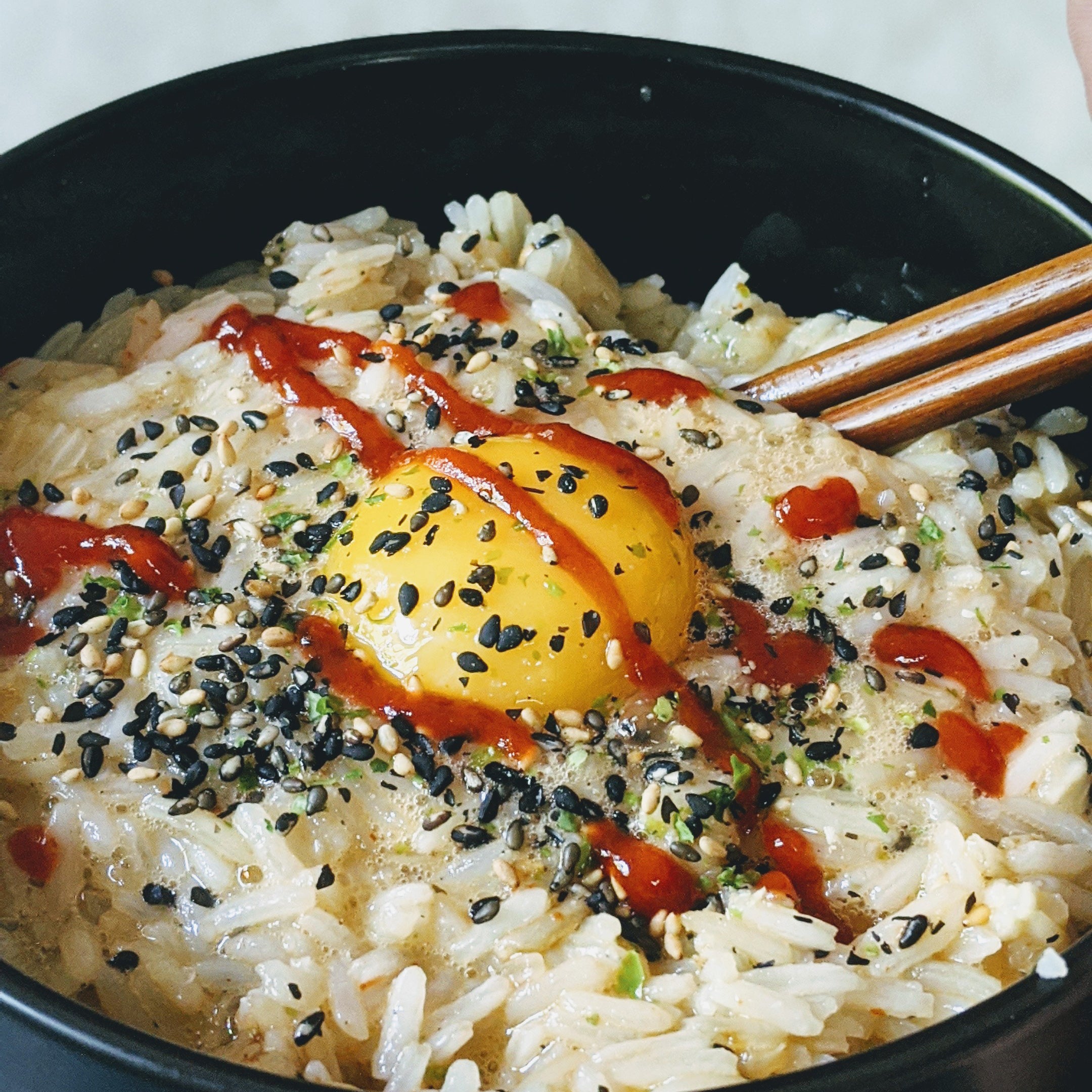Easy to make, perfectly nutritious, and incredibly tasty. When it comes to most meals, youÔÇÖre lucky to achieve two of those attributes. But tamago kake gohanÔÇöJapanese for ÔÇťegg riceÔÇŁÔÇömanages all three┬áand does it for under $1 in ingredients per serving.
Pre-lockdown, I always rewarded myself for going to the gym with a hearty takeout meal immediately afterward. But as I transitioned to the new normal, in addition to improvising home workouts, I needed to adapt with something I could whip up in my own kitchen. Anything I cook during the middle of a workday needs to be easy to make and easy to clean up. I was also looking for food containing ample protein and plenty of carbs. While searching for simple, rice-based options, I remembered my favorite Japanese breakfast and discovered for making it.
What YouÔÇÖll Need
- A pot with a lid
- A measuring cup
- A bowl
- Chopsticks
- 1 cup white rice
- 2 whole eggs and one egg yolk
- Soy sauce to taste
- (a Japanese rice seasoning made from sesame seeds and seaweed) to taste
- Sriracha to taste
Instructions
Making Japanese-style egg rice couldnÔÇÖt be easier. Just cook a cup of white rice according to the package directions. Once thatÔÇÖs done, spoon the rice into a bowl, crack two raw eggs atop it, and add some soy sauce and furikake. A good bowl of egg rice is defined by its foamy texture, which you achieve by beating the raw eggs into the rice with chopsticks.┬áL├│pez-Alt┬ásuggests doing┬áthis vigorously, to help incorporate air into the mixture. I then finish┬ámy rice bowl with a┬áraw egg yolk for added protein. (As long as the rice is hot enough, the eggs┬áshould partially cook, but if youÔÇÖre worried about raw eggs, you can always use pasteurized ones.)┬áAdd┬ásome sriracha and a little more furikake. Eat it while itÔÇÖs hot.
The end result provides about 22 grams of protein, 44 grams of carbs, 17 grams of fat, and 430 calories, according to the nutrition details on the various packages I use.
WouldnÔÇÖt this dish be healthier with the addition of vegetables? Absolutely. ItÔÇÖs great with slices of avocado, some extra┬áseaweed (already an ingredient found in┬áfurikake), or, even better,┬áa pickled vegetable like kimchi, which adds a layer of sour spiciness.
Tamago kake gohan is so quick and simple to make that itÔÇÖs become my go-to post-workout meal five days a week. After eating it, I feel clearheaded, energetic, and not overly full.┬áI also avoid┬áthe unsettled tummy I sometimes get from other post-workout shakes and meals. Not bad for a buck.


